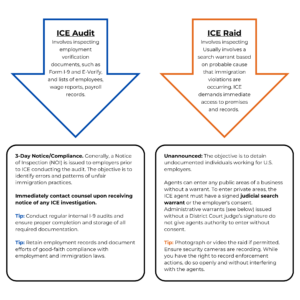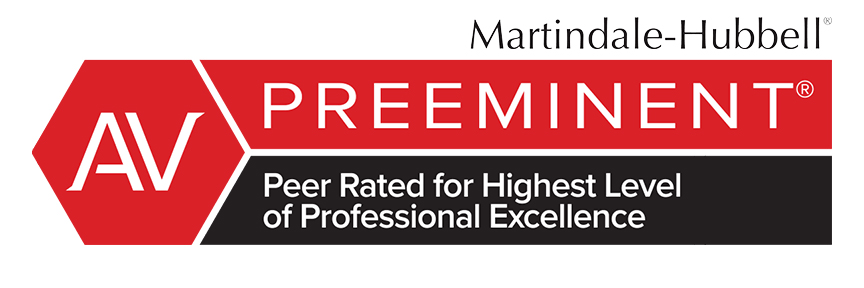Client Alerts & Publications
Immigration Audits and Raids: Employer Preparations to Mitigate Risks
Authors: Tiffany A. Harrod, Stephen E. Irving,
Published Date: February 6, 2025
This Alert will provide steps employers can take to prepare for increased Immigration and Customs Enforcement (ICE) audits and raids under the Trump Administration.
Immediate Action Item for All Employers: Have a Plan and Be Ready
Seven executive orders by President Donald Trump have expanded federal agencies’ authority to arrest and detain undocumented individuals. Increased raids and unannounced workplace visits by ICE mean employers should have a plan in place for how to respond. Employers and contractors may face two types of investigations: ICE Audits and ICE Raids.

8-Steps to Mitigate Risks
- Train employees on proper I-9 compliance. Ensure that you have completed Form I-9s for all active employees, make corrections to I-9s as soon as an error is identified and retain Form I-9s for the mandatory period for terminated employees. Keep I-9 records separate from personnel files.
- Designate a single person to be the primary point of contact in case of an ICE raid and consider establishing protocols and training to designated company representatives. Create a detailed plan that outlines roles, responsibilities and procedures for different types of ICE visits. This plan should be readily accessible to all relevant staff members, especially a front desk receptionist.
- Request and review judicial search warrants and document the name and contact information of the agent(s). Judicial warrants, signed by a judge, give law enforcement officers, including ICE, the authorization to make an arrest, a seizure or a search. An administrative warrant, however, does not grant authority to enter private areas without consent. Administrative warrants generally appear on Form I-200 or I-205 and can be signed by an immigration judge or an immigration officer.
- Contact your legal counsel and have a plan for dealing with the media and public relations.
- Create a clear written policy designating which areas are closed to the public. ICE agents may enter public areas, such as a lobby, waiting area or parking lot, but they cannot access private areas without a judicial warrant. Employees should understand which areas ICE agents may enter without a warrant to avoid inadvertently consenting to a search.
- Accompany the ICE agent(s) during the raid and photograph or video record the raid if permitted. While you have the right to record enforcement actions, do so openly and without interfering with the agents. Make immediate backup copies of any surveillance footage and store them securely.
- Stay calm and do not obstruct or interfere with the search. Do not hide employees, aid in escape from the premises, shred documents, or provide false or misleading information. Remind employees that the company has the right to have counsel present and employees can remain silent until counsel is present.ICE should not demand to interview anyone without counsel present.
- Document all areas searched and all items seized during the raid. Take detailed notes of the entire process. Maintain a list of employees present during the raid. Record what areas were searched. Document any conversations or interactions with agents. Keep copies of all documentation provided to ICE or by ICE. Obtain receipts for any documents taken by ICE.
While there are no ways to completely inoculate your company or its work sites from increased enforcement efforts, the above measures can be taken to mitigate risks.
For more information, please reach out to Tiffany A. Harrod and Stephen E. Irving.
Peckar & Abramson is monitoring government developments that may impact the construction industry. Anticipating and planning for changes in the law is the best way to avoid being caught off guard. Ensure you are staying up to date and subscribe to P&A’s alerts here.










